The corals in the central region of the Great Barrier Reef have suffered through this last summer with some bleaching and also damage from cyclone Kirrily. There are seasons under the sea, just as there are on land – and in life.
Even though large areas of reef crest are denuded of coral – colonies of clown fish have hung-on including at Lynch reef. These little fishes, they still come out to say ‘Gidday’, at least to me.

That was my experience earlier this week when I had the privilege of diving five reefs off Townsville – Chicken, Wheeler, Davies, Lynch, and also John Brewer Reef.
These reefs are part of the central region of the Great Barrier Reef. I was diving with Paul Crocombe the owner of Adrenalin Snorkel and Dive, and also Stuart Ireland the owner of Calypso Productions. There is a combined 60 years of experience, much of it under the water at the Great Barrier Reef.
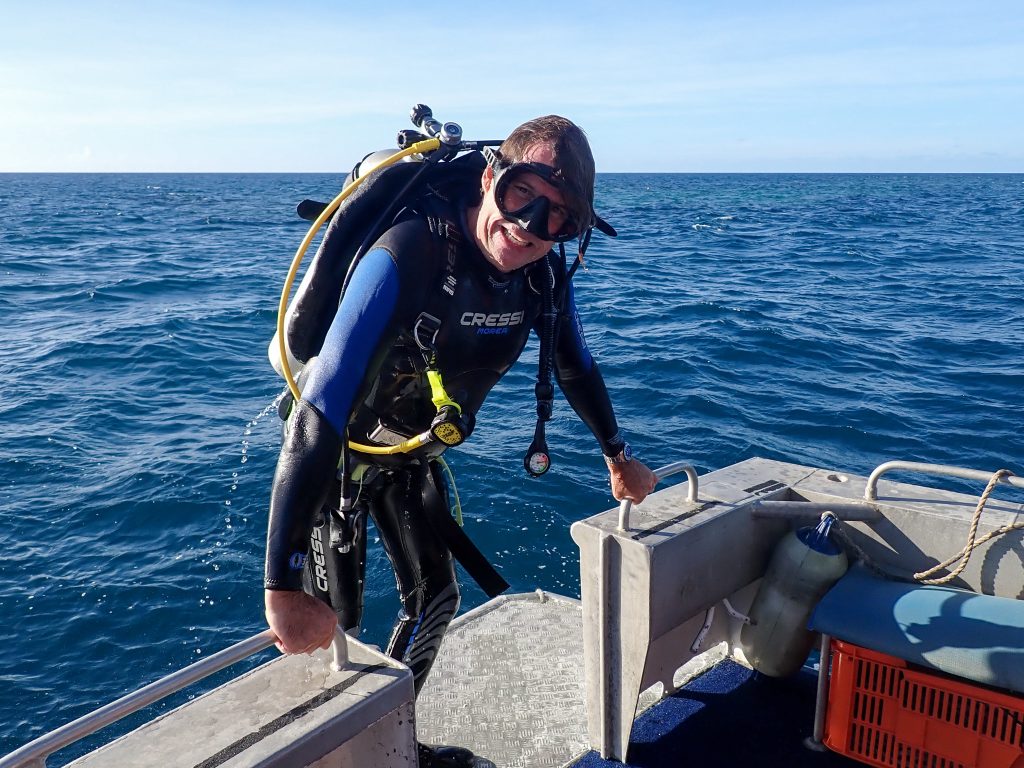
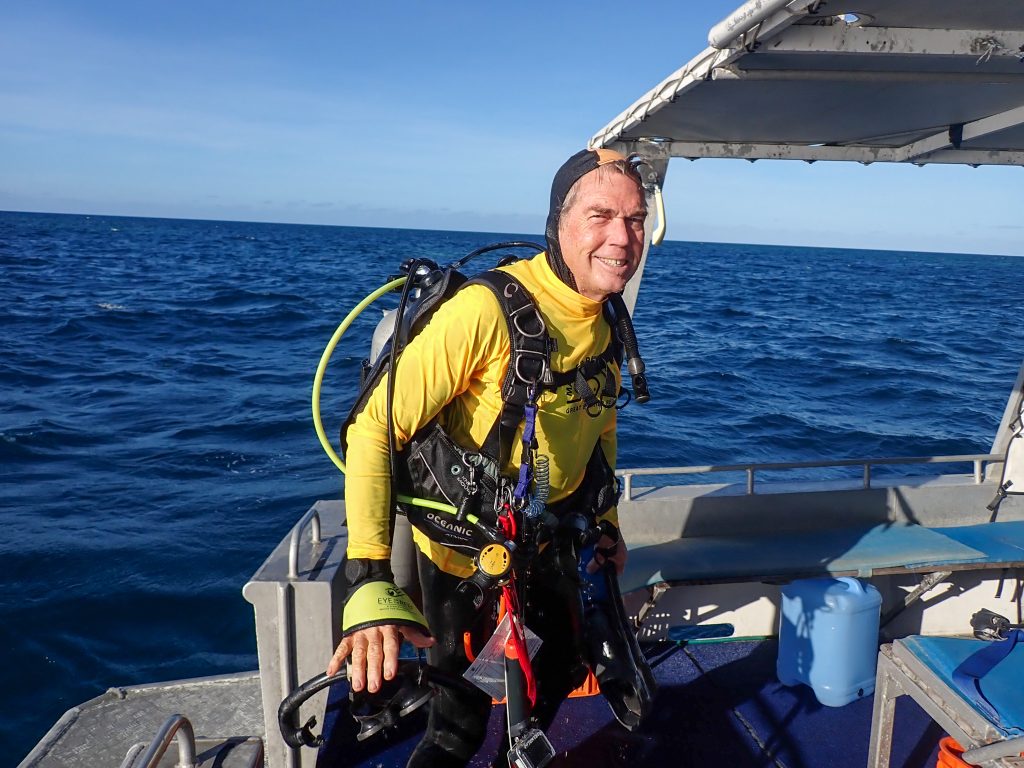
Paul and Stuart have seen cyclone damage before, and also bleaching.
We did find one reef, Wheeler reef, that was essentially intact, with an extraordinary diversity of fish, corals, and very little bleaching. We will feature this reef in an IPA-sponsored short documentary about this adventure, soon. (You can find previous efforts online, click here.)
So, yes, it is the case that you can always find somewhere that is flourishing, even if overall conditions have not been so good. In this little clip (click here, and following), that I’ve just now uploaded to Vimeo you can see Paul with the fishes at Wheeler reef on Wednesday 3rd April 2024.
Not a lot of people get to dive at Chicken Reef because it is so far offshore, on the edge of the Great Barrier Reef; quite a way east of Wheeler. (Not quite as far as Myrmidon, that I visited in October 2021 and blogged about back then, including click here.)
Stuart put the drone up at Chicken and got some impressive aerials. But with the choppy conditions it was impossible to make much out in terms of the condition of the corals from above the water, from a drone.
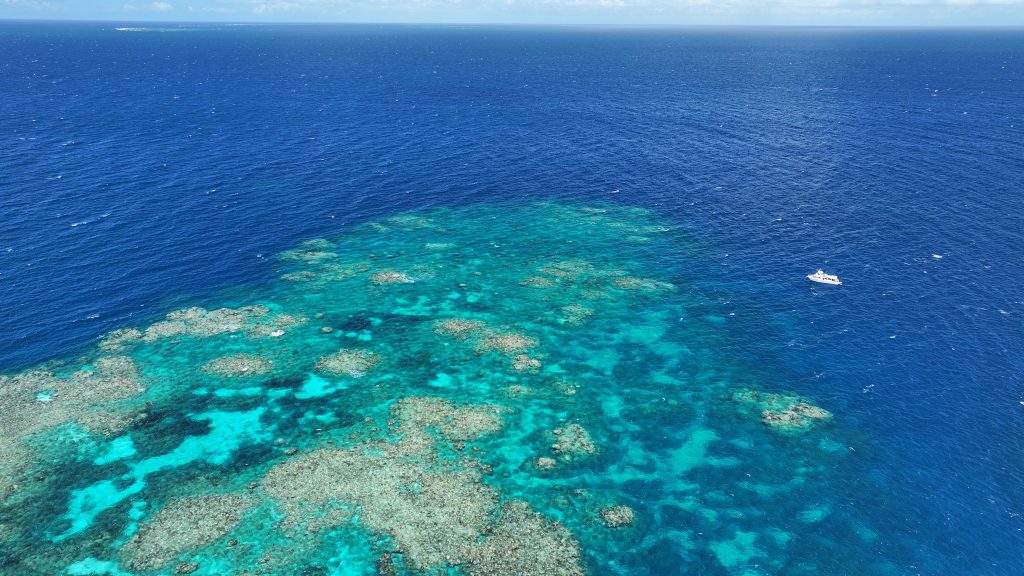
I spent all of Wednesday on snorkel, and while Stuart had the drone up over me, I was taking photographs.
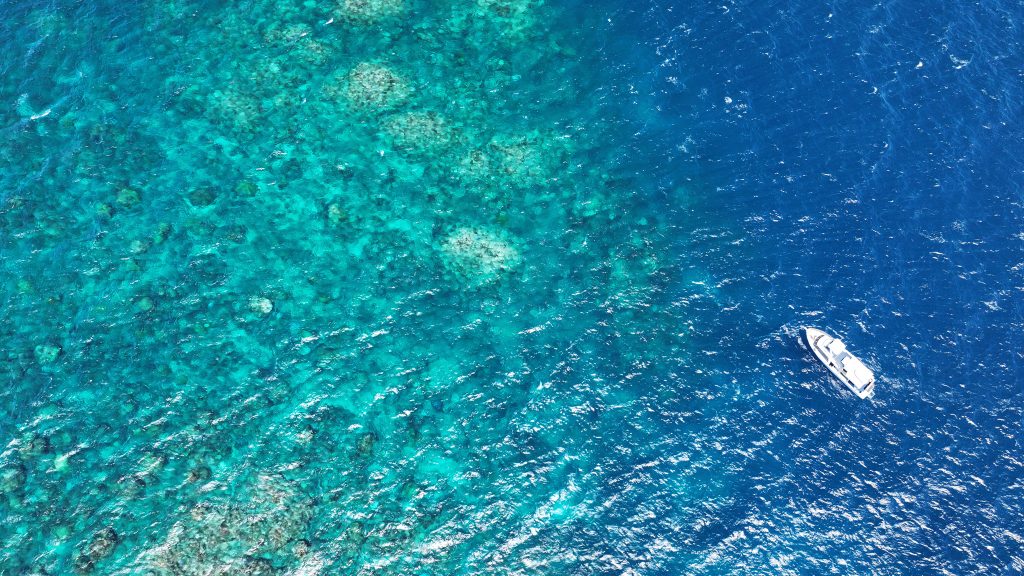
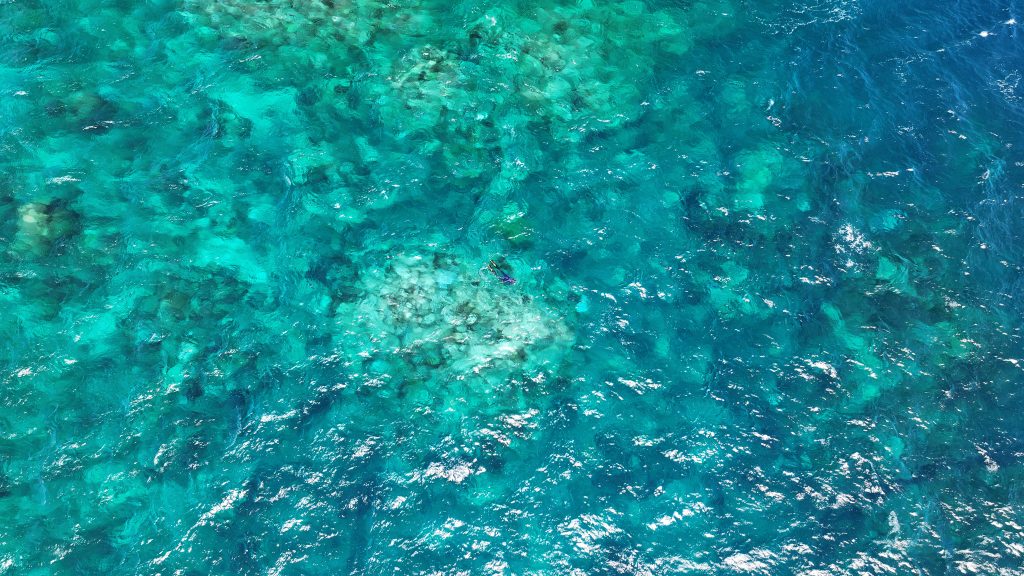
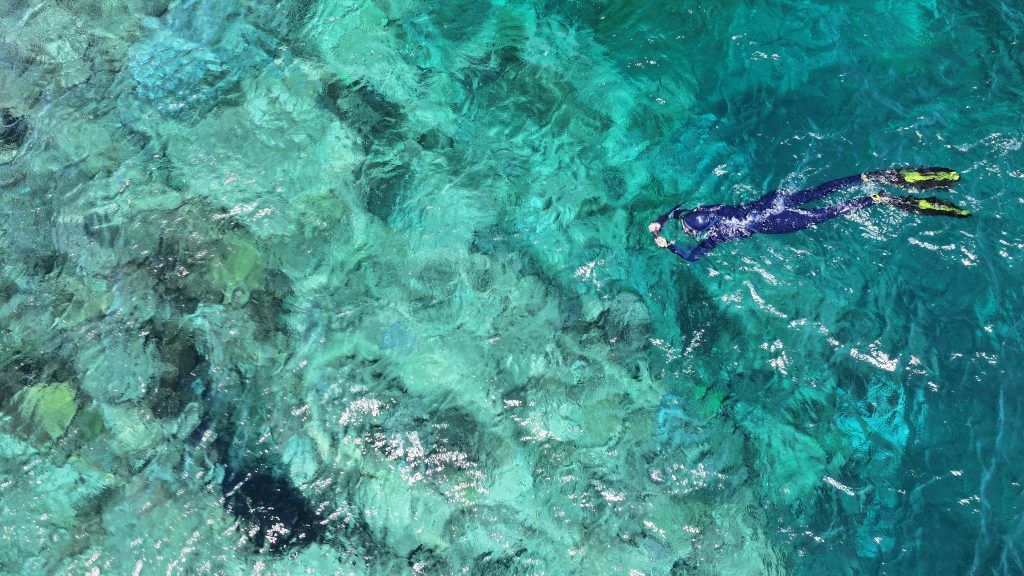
There was good coral coverage at this section of reef crest, at Chicken as you can see from my underwater photograph.
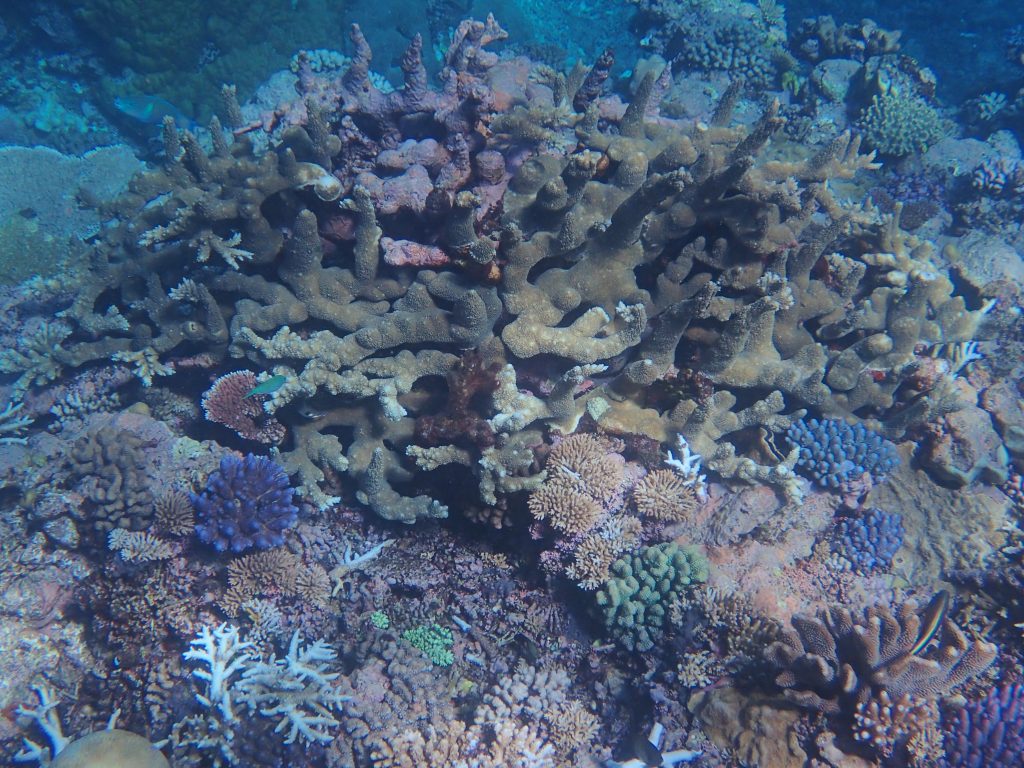
And when Stuart finally got into the water, I photographed him photographing one of the impressive large Porites at this reef, at Chicken reef. There is a large plate coral just below him.
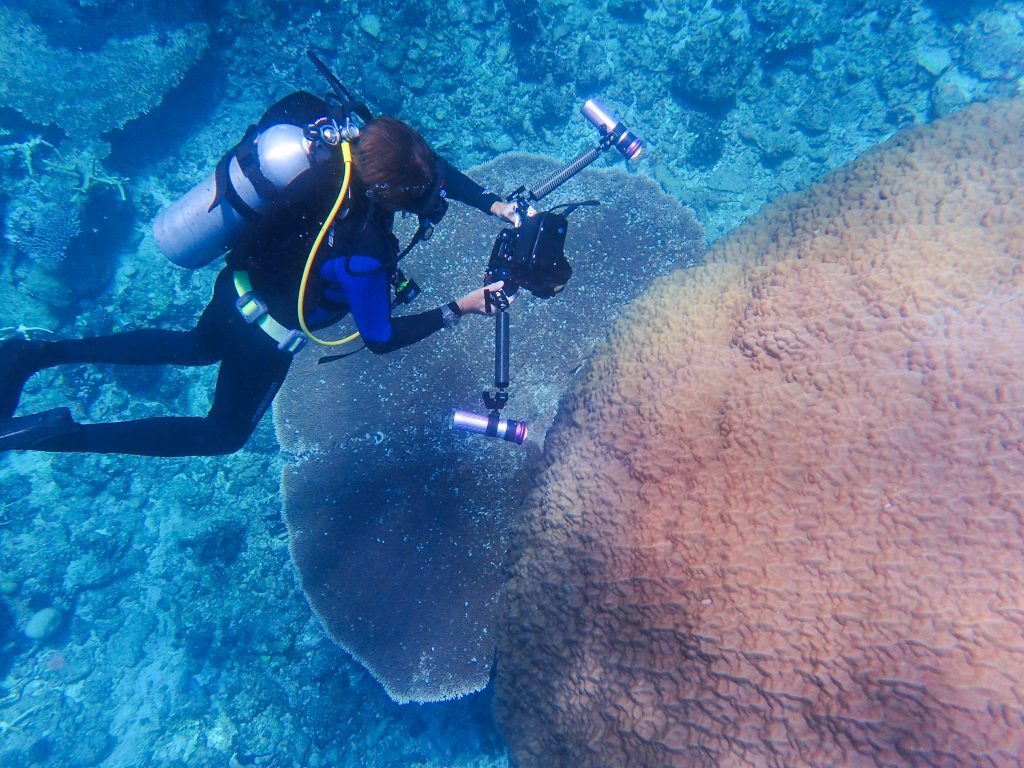
Then Stuart captured me above the same coral, free diving.
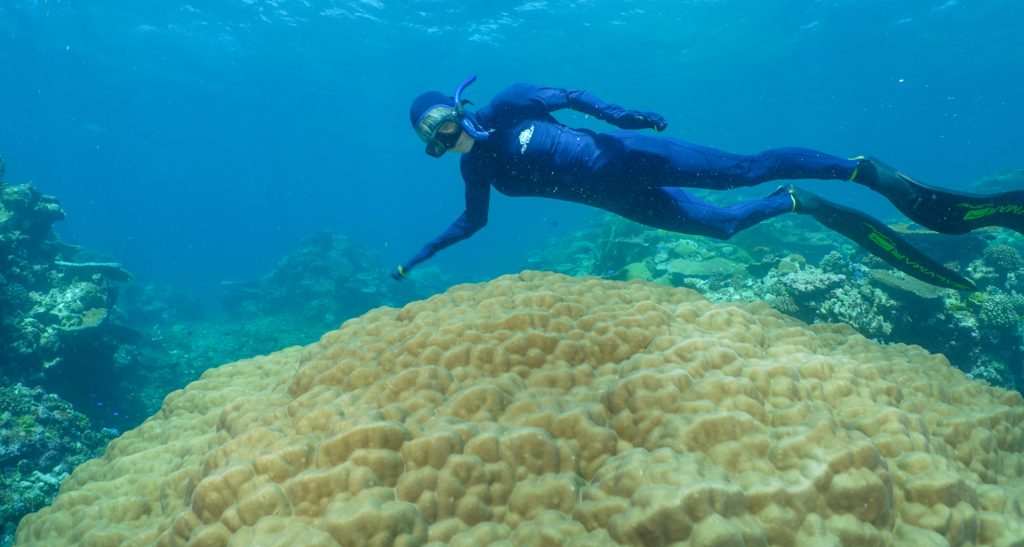
Stuart didn’t manage to get everything on camera. Our lookout Robert, from Adrenalin Snorkel and Dive, saw a whale shark go straight over the top of Paul and Stuart at Chicken reef without them noticing. They were looking down, not up! I was some distance away on snorkel, free diving.
Whale sharks (Rhincodon typus) are the largest extant species of fish, and the largest of the sharks and they feed on plankton.*
More about this adventure in my next blog post, Part 2 to come and there will be a short documentary. We have so much footage!
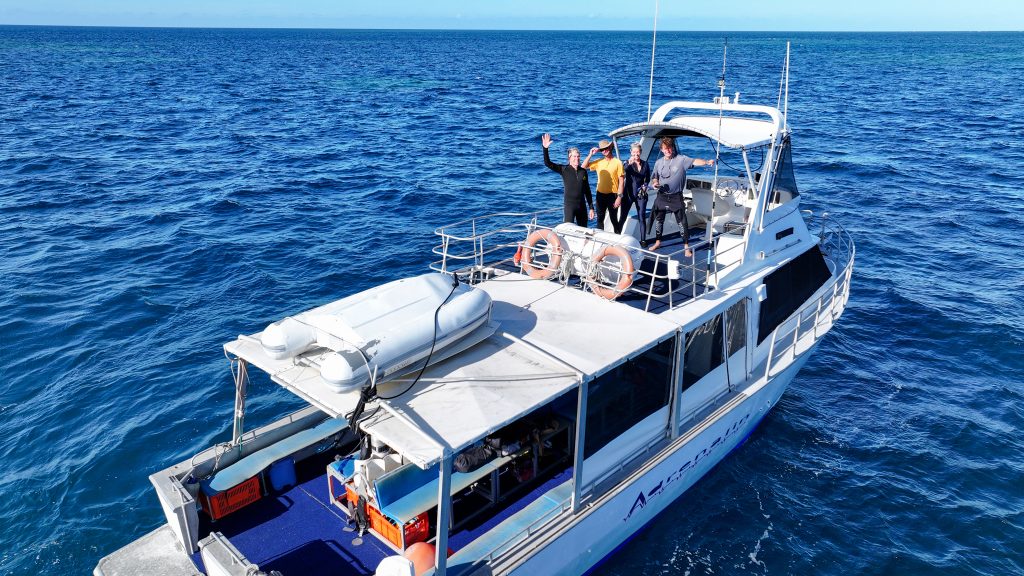
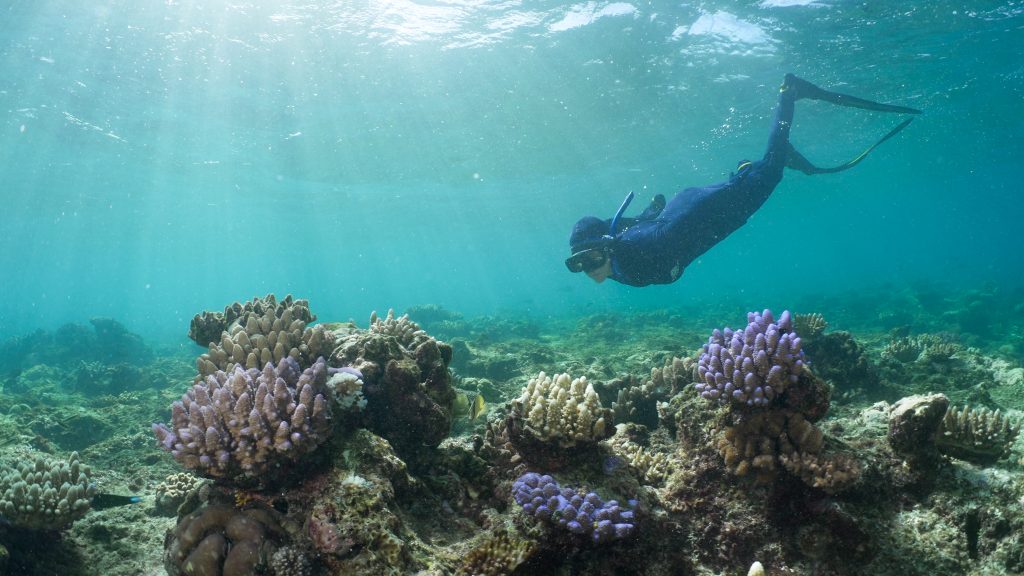
PS. Following is a very short clip of a parrot fish at the crest of Wheeler reef, taken on Wednesday 3rd April 2024 – posting just now for my daughter across the other side of the Pacific in Seattle. The parrots, they often make us laugh.
******
Update Sunday 7th April.
I published a link to this post across at my official Facebook page, and my FB friend Dave Ross, another underwater legend, wrote that Whale sharks will eat fish even posting this great link to prove his point:


 Jennifer Marohasy BSc PhD is a critical thinker with expertise in the scientific method.
Jennifer Marohasy BSc PhD is a critical thinker with expertise in the scientific method.

It’s been so windy for the past few months you were lucky to find the window to get that far out. Water temperatures have been 30 degrees C in the inner parts around Bowen and Townsville so I would imagine some stress on some of the shallower reef systems.
Thanks Jennifer. We love to see your pics from the reefs, and enjoy your commentary. I hope the folk at the Marine Park Authority feel embarassed when they report on the state of the reef from 140m up!! Impossible to see any detail.
Keep up the great work.
The recent El Niño is coming to an end over the next few months. There is a large pool of cooler than normal water under the entire tropical Pacific…which to me means this next La Niña will be a strong event…with stronger than normal trade winds pushing the full width (14,k klms) across the Pacific
Expect the sea surface level in the GBR and Indo/Australian Coral triangle to rise allowing strong coral growth into that higher water. Its just cycles of growth and bleaching that given the TAO Array is so predictable months ahead now.
You can see all the bs…’atoll flooding’…news reports coming in the lying liberal media…when they could just be explaining the ENSO cycles better. Rant over.
https://www.pmel.noaa.gov/tao/drupal/assorted_plots/images/TAO_5Day_EQ_xz_Anom_Comp.gif
“For best results, use a good quality digital SLR camera fitted with either a 24-70mm or a 70 – 300mm
zoom lens. A circular polarising filter is essential for reducing glare and improving the clarity of
underwater features and corals beneath the surface. Since the images “move” fast, use the fastest
shutter speed your camera will allow in the light conditions. Shutter speeds of <1/1000th second are recommended. To achieve this, it may be necessary to reduce the F-stop (open the aperture, e.g. F1.8
– F5.6) and use a moderately high ISO number for increased light sensitivity (e.g. 800-1800 depending on the light conditions, modern full frame mirrorless cameras can use even higher ISO settings without
losing pixel clarity up to 4000 or higher, but by rule use the lowest ISO settings to give less “grainy”
images). Turn the automatic image stabilization feature on your camera to “ON” and try not to support the camera (or arm, shoulder, elbow) on the side of the plane to minimize image blurring due to
vibration. It is important to review photos as you go (when practical!) and adjust the settings as
required throughout the flight as light conditions will change dramatically through the day."
https://www.aims.gov.au/sites/default/files/2022-06/AIMS_SOP11v3_Aerial-Surveys-Coral-Bleaching_202206.pdf
We visited Wheeler and Keeper late last year and the coral was healthy and diverse. I’m relieved to hear the run of cyclones this season haven’t effected that reef. John Brewer Reef must have been in the worst quadrant for Cyclone Kirrili…
We’re in the Whitsundays now where the soft coral seems to be proliferating with the slow recovery from cyclone Debbie. Love your blog posts and wish more people made it under the surface to see the reef for themselves.